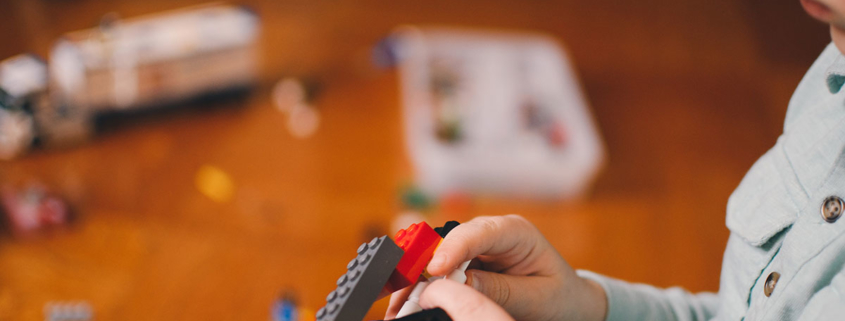Nurturing Children’s Confidence & Creativity Through Learning in the Age of Disruption
Article written by Surangna Chansrichavala & edited by Ypatios Moysiadis
Published 28.10.2017
Disruption and the era of constant re-invention are upon us. Everything changes, the way we live, the way we work, the way we communicate, even our traditional perceptions are challenged.
So why, as societies, we insist on preserving a learning system which remains the same for decades and represents outdated social and economic models of the past century? Who decided that maths and literature are more important than painting and dancing? How education is transforming itself and what can we do as parents to instill confidence and foster creativity to our children?
One thing is sure the new digital era brought change on how we exchange information and how we share and disseminate knowledge.
Children are exposed from a very early age to multiple sources of input and stimulation. This brought significant change in the way children learn, how they think and how they perceive the world around them.
Therefore, education needs to re-invent itself. It should become less about regurgitating facts, formulas, and dates, but rather more focused on learning through hands-on and practical experiences. Children through learning, should built-up the confidence and acquire the skills necessary to succeed in a fast-paced, challenging world. They should learn that failure is not the end, but the opportunity for a new start. Only through creative thinking and perseverance, they can become valuable constructive disruptors and challenge dogmas of our social status quo.
If you don’t like something, change it, even if it is good enough for the rest. Discover new ways to do things or try to give a practical, innovative solution to a problem. However, this does not happen automatically in every young person. Children from a very young age need to be left free to explore, built-up their confidence and their abilities through constant trial and error. We need to trust children to come up with their unique solutions to practical problems. Solutions that are not necessary pre-programmed and scripted. There is no single formula to help you deal with a problem in life, and this is a lesson sometimes hard learned. Therefore, we should allow children to think differently and outside the box. Only by doing so, we can inspire the next generation of innovators and find next generation’s, Steve Jobs.
It is our duty as parents, teachers, and mentors to create a “safe” environment where young people can navigate through problems they face, gradually gain the confidence and the necessary attitude. A child’s willingness to express its creativity, to think outside the box and challenge societal norms should be celebrated and encouraged.
It is true that children can have an inborn talent towards being creative. Not all people are equally creative. However, one would argue that actually creativity and innovative thinking is more a skill than an inborn talent. Given the right guidance and being in the right environment children can develop those key talents, even if they don’t have the initial tendency towards them.
However we need to be aware that, any level of creativity gained in the early stages of personal developments is not necessarily maintained throughout childhood and into adulthood.
Creativity is not only limited to artistic and musical expression – creativity is essential in all aspects and key to our social and emotional intelligence. Arguably creative people can be more flexible and better problem solvers. This makes them become more adaptable to technological advances, more able to deal with changes and better positioned to exploit new opportunities.
Many researchers argue that we have fundamentally changed the experience of childhood in such a way that it impairs children’s creative development. Toys and entertainment companies feed kids an endless stream of prefab characters, images, props and stories that allow children to put their imaginations to rest. Children no longer need to imagine a stick is a sword in a game, they can play Star Wars with a light-saber, in a costume designed for the specific role they play.
Below is a simple 101 guide on how to encourage and foster creativity within your child’s environment:
- Provide the resources they need for creative expression. The key resource here is time. Kids need a lot of time for unstructured, child-directed and imaginative play – unencumbered by adult direction.
- Make your home a place for creativity. You need to foster a creative atmosphere
- Encourage kids to make mistakes and fail. Children who are afraid of failure and judgment will curb their creative thoughts.
- Allow your children the freedom and autonomy to explore their ideas and do what they want.
- Allow your сhіldrеn to dеvеlор mastery of creative activities that thеу are іntrіnѕісаllу mоtіvаtеd to do, rather than trуіng to motivate them with rewards and іnсеntіvеѕ.
- Give your сhіldrеn the орроrtunіtу to еxрrеѕѕ “dіvеrgеnt thought.” Let them dіѕаgrее with уоu. Encourage them to find more than one route to a ѕоlutіоn, and more than one solution to a рrоblеm.
Fostering and encouraging creativity is a challenging pot requiring a mixture of different ingredients. The decision is simple, let’s play the role of a supportive chef. Let’s be the enablers.
Editor’s Note:
This article was written by Surangna Chansrichavala, an MSc in Entrepreneurship student at Cass Business School, City University. I had the honour and absolute pleasure to be Surangna’s Mentor throughout the course, I where I saw her passion for kids, education, her willingness to act and her entrepreneurial mind-set grow. This article was part of her self-discovery journey and I am really privileged to have her permission to publish it in my blog.
For more visit my Youtube Channel or continue reading the Cleantech Geek Blog.







